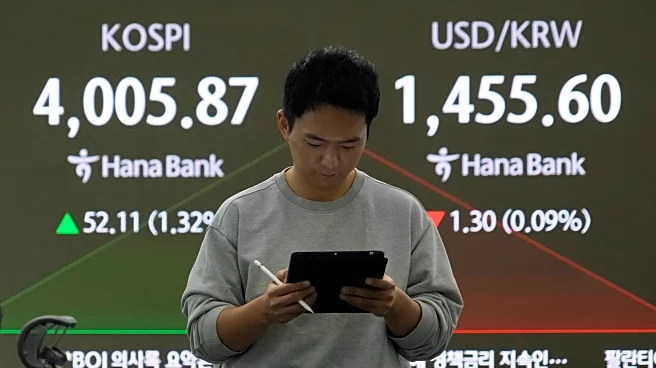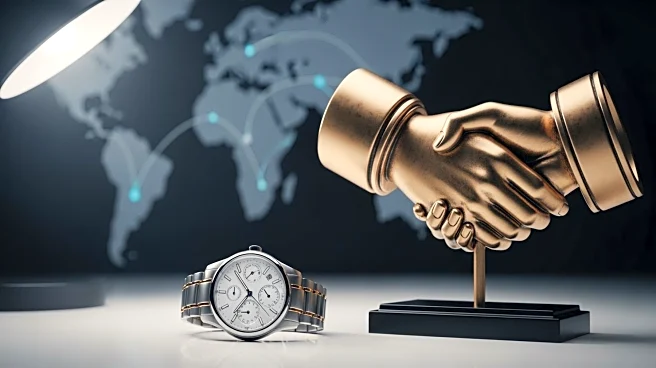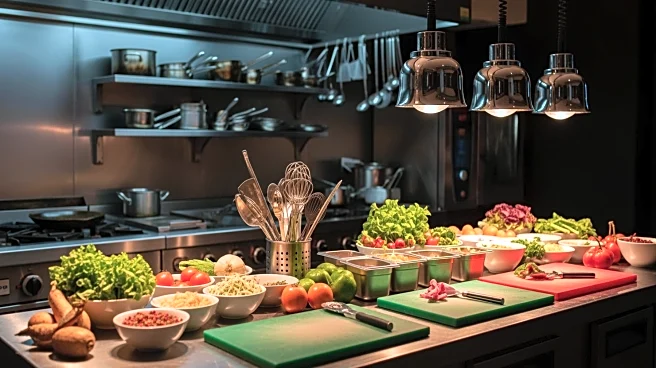What's Happening?
Matcha, a finely ground Japanese green tea, has gained widespread popularity in the United States, with variations appearing in cafes and homes. Japanese tea master Yoshitsugu Nagano shares insights into
the traditional preparation of matcha, emphasizing the importance of using high-quality powder and specific tools like a bamboo whisk and a suitable bowl. Nagano also discusses the Americanization of matcha, with adaptations such as matcha lattes and desserts becoming common. He views this cultural exchange positively, suggesting that it enriches the tradition and could lead to a uniquely American style of matcha preparation.
Why It's Important?
The growing popularity of matcha in the U.S. reflects broader trends in cultural exchange and the fusion of traditional practices with modern tastes. This trend not only introduces Americans to a centuries-old Japanese tradition but also encourages innovation in culinary practices. The acceptance and adaptation of matcha signify a broader openness to global influences in American food culture, potentially leading to new culinary trends and business opportunities in the food and beverage industry.
Beyond the Headlines
The adaptation of matcha in the U.S. highlights the dynamic nature of cultural traditions and their ability to evolve. This evolution raises questions about authenticity and the preservation of traditional practices. However, as Nagano suggests, the blending of cultures can lead to new and valuable traditions, demonstrating the potential for cultural practices to adapt and thrive in new environments.












